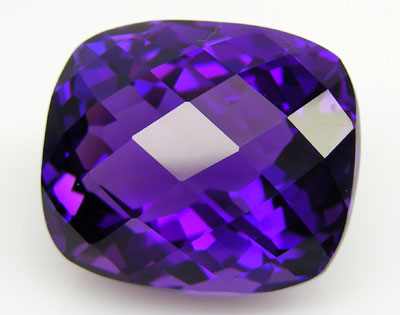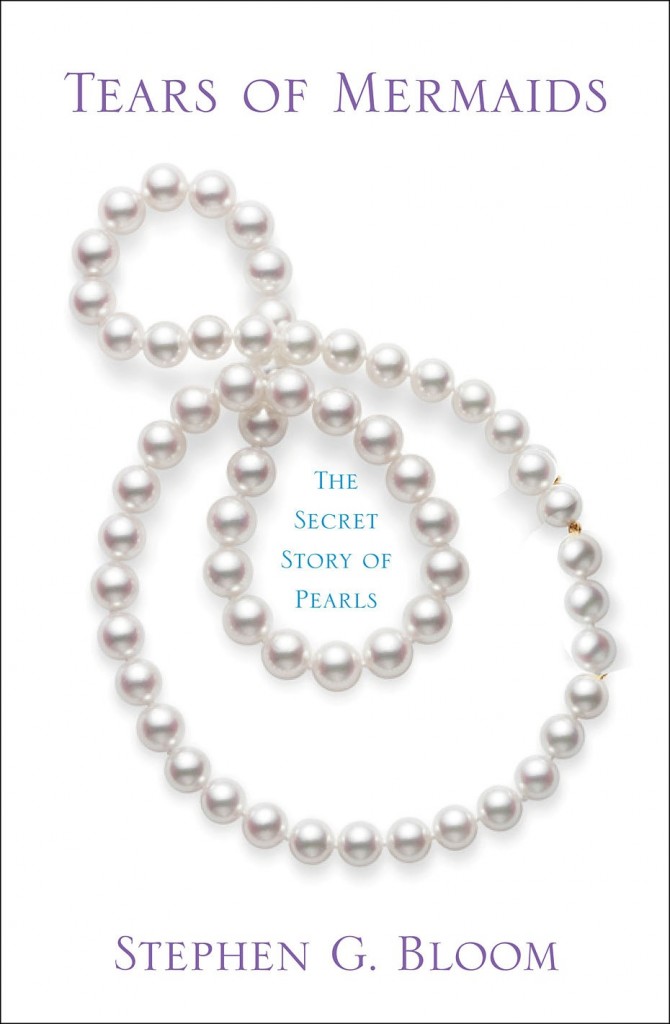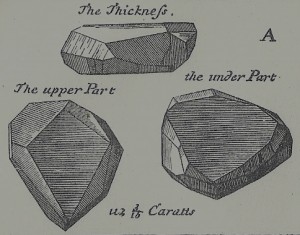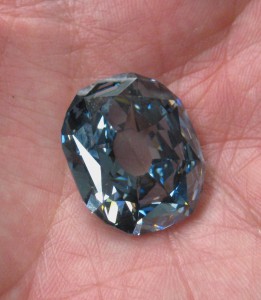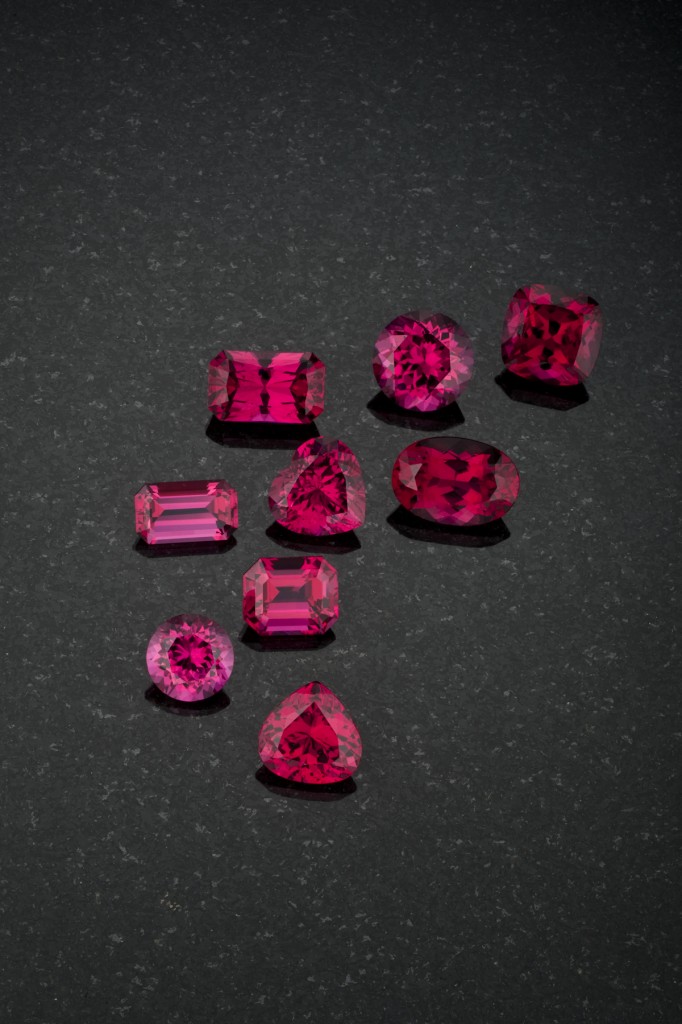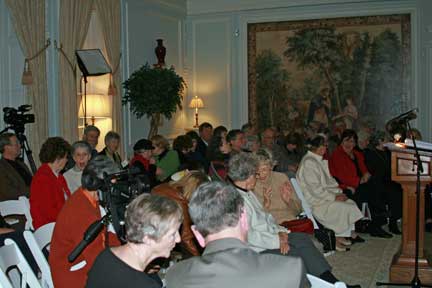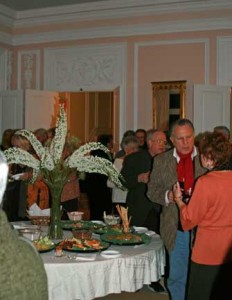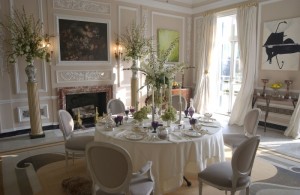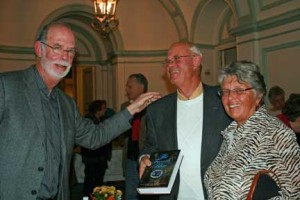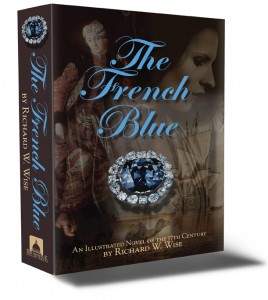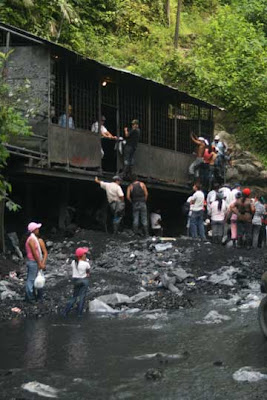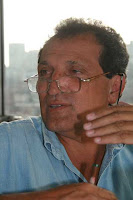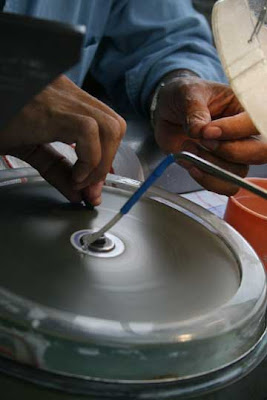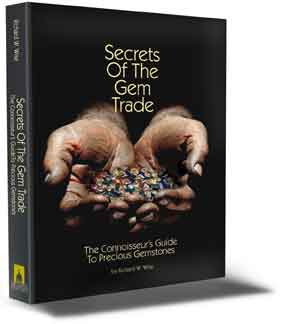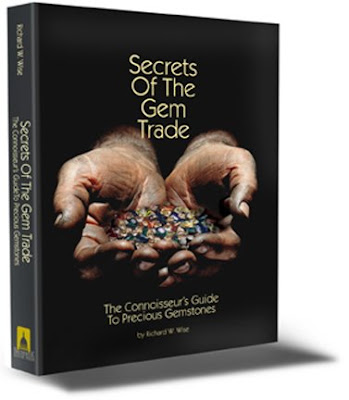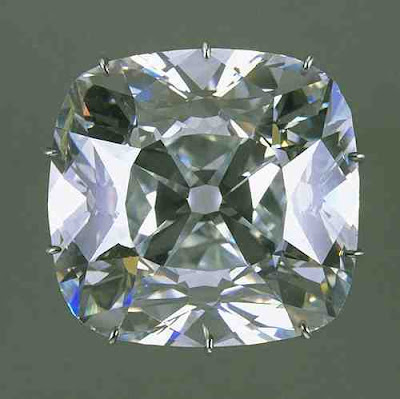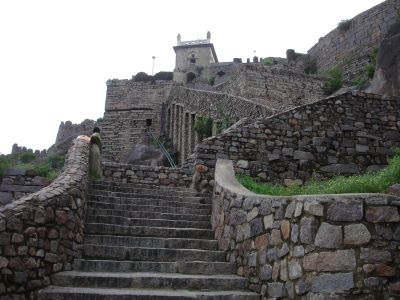In this post: Book Review: Hope Diamond by Richard Kurin
by Richard W. Wise, G.G.
©2007
Semiprecious is like semi-pregnant, it is a word that makes no sense. No less an authority than Robert M. Shipley, the founder of GIA, called it “an indeterminate and misleading classification”. Still, some people, including a good many dealers, stubbornly cling to it like limpets sucking on a rock. In ancient days do you suppose King Tut and the rest of the royals knew that they were using second class gems to decorate their tombs? When will this term finally be consigned to the linguistic dustbin where it truly belongs?
The French philosopher Voltaire insisted that intelligent discussion was impossible unless terms were defined. I contend that the precious versus semiprecious is a distinction without a difference and that semiprecious is a truly meaningless term. To use a meaningless term is to talk nonsense. To prove the point, I will issue this challenge. I say that the term precious cannot be defined in a way that excludes gemstones other than the usual list.
Consider, if you will, the usual suspects: The list of precious gems usually includes: diamond, ruby, blue sapphire and emerald. Right? Well if so what criteria make these gems and only these gems precious? All possess the usual criteria; beauty, rarity, value, durability but to the exclusion of all others? Take beauty, emerald can certainly be beautiful but is it more beautiful than its first cousins the aquamarine, the red beryl, the heliodor? It is worth more in the market than aquamarine and heliodor but is far more abundant and lower priced than red beryl.
Alexandrite, is another case in point, it possesses all of the criteria and is rarer than every gem on the list yet it is excluded. Why is blue sapphire a precious gem and yellow sapphire only semi-precious? Cuprian tourmaline from Paraiba, Brazil is hugely expensive, it is certainly beautiful and rare and durable to boot. Why isn’t cuprian tourmaline considered a precious gemstone?
If its precious, its, well precious but if it’s semiprecious is somehow less than precious. What makes one stone precious and another less so and why, one might ask, would anyone marketing a product use a term to describe that product that denigrates that product?
Win a Free Book:
I will give a free signed, hardbound copy of the 1st edition of my book: Secrets Of The Gem Trade, The Connoisseur’s Guide To Precious Gemstones to the first of my readers to provide a definition of the term Precious that includes diamond, ruby, sapphire and emerald and excludes all other gemstones.
A couple of ground rules; First, according to The Pocket Oxford to define means to “ to mark out the boundary of…to give the exact meaning of a word” thus if I say andesine is a precious gemstone the question is, what are the criteria that determine preciousness and does the given gem meet them? Second; a definition is not a list so something like “precious is a gemstone category that includes diamond, ruby, sapphire and emerald.” is not acceptable because it is redundant like saying a “a rose is a rose”. What is required and acceptable is a true definition one that provides a basis, a series of criteria by which a stone is either included or excluded from the select company of precious gems. Third: Your answer must be posted in the comments section (below) of this blog post on or before April 20, 2007.
Book Review:
Hope Diamond, The Legendary History Of A Cursed Gem by Richard Kurin, Smithsonian Books, Harper Collins. $24.95
This wonderfully researched and lively account traces the story of the Hope Diamond and in the process debunks and dispels much of the misinformation surrounding the world’s most famous gem.
The debunking begins on page one. Years ago I heard a story that Harry Winston shipped the Hope to the Smithsonian by regular mail in a plain brown paper wrapped package. It went by mail alright in a plain brown wrapper but it was insured for a million dollars.
Kurin begins his tale at the beginning by making his own journey to northwestern India to the fabled Kingdom of Golconda and the storied mines of Kollur. This is the mine mentioned by the famed 17th Century French gem merchant, Jean-Baptiste Tavernier. Tavernier, the man who sold the diamond to Louis XIV of France was famously silent about where he obtained the stone but he does mention Kollur as a source of colored diamonds and based on that single mention, most experts have deduced that Kollur was the source.
What did he find in Kollur? Snakes! After a difficult three day journey following Tavernier’s route by car, snakes and very little else. There exists barely a trace of the old mines which were played out and abandoned in the 18th century. The presence of snakes together with a nearby mountain and bit of local folklore leads Kurin to speculate that perhaps, Kollur was the site of the original Valley of the Serpents mentioned by Marco Polo. A bit of a leap, perhaps, unlike Mogok, Kollur isn’t a deep valley but the locals do have a two-headed bird god and that is something the Burmese contender lacks.
Source of The Great Blue:
Kurin pulls together an interesting, if flawed, argument for Kollur as the source of the Hope. He points out that when Tavernier sold the stone to the Sun King, the Hope was barely fashioned, almost rough. From this he concludes that the stone was purchased at the mines.
His next conclusion is a bit more of a reach. With the meticulous attention to detail that he demonstrates throughout, Kurin discovered a short note by Tavernier on the original chart made up by the French gem merchant, describing number six of the best twenty stones Tavernier sold to the French monarch in 1668.
“C’est un autre diamante que j’achetais l’an 1653 a la mine de Coulour.”
Taking this statement and the fact that there are no other stones immediately adjacent to that bit of text, the author speculates that the autre diamond, to which Tavernier refers, may be the blue and if so, Kurin concludes, it was purchased in 1653 at Kollur.
The question is; to which diamond does the note refer and was number six another diamond purchased or another diamond purchased at Kollur? The passage can be read either way. The note, as Kurin points out, was not next to the Hope which was number one on the list. To that I would add two additional points that pose certain difficulties in accepting Kurin’s speculations: First, number six is a colorless diamond and both the stones, numbers five and seven, immediately adjacent to number six are also colorless and second; number six is shown as completely faceted even though, according to Tavernier’s own words, it was originally purchased at the mines at Kollur. Fact is, any dealer worth his salt knows a bit about recutting. The real question is; why if Tavernier did hold on to the stone for fifteen years why didn’t he recut it?
First, number six is a colorless diamond and both the stones, numbers five and seven, immediately adjacent to number six are also colorless and second; number six is shown as completely faceted even though, according to Tavernier’s own words, it was originally purchased at the mines at Kollur. Fact is, any dealer worth his salt knows a bit about recutting. The real question is; why if Tavernier did hold on to the stone for fifteen years why didn’t he recut it?
To the above I would add a further quibble. Tavernier was a dealer and speaking as a dealer I can state with some authority that our biggest thrill is the hunt. After the adrenalin rush of bagging a big, beautiful and expensive stone, a dealer’s next thrill is selling that big beautiful expensive stone to obtain the capital to begin the hunt all over again. Would a dealer hang onto such a treasure for 15 years if he could have sold it? I doubt it.
Harry Winston and The Smithsonian:
The book is a great read. I discovered interesting facts and important information not previously available with each turn of the page. One particular favorite is the section in which the author reproduces the correspondence between Harry Winston, his lawyers, The Smithsonian, their lawyers and the IRS and its lawyers that detail the labyrinthine negotiations that resulted in Harry Winston’s donation of the Hope Diamond to The Smithsonian. Winston was more than willing to donate the Hope Diamond to the Smithsonian but he was also determined to receive its full value as a tax deduction.
Cartier versus Evalyn Walsh McLean:
In Chapter 19 we learn that Pierre Cartier was the man most responsible for promoting the Hope’s hard luck legend. Cartier bought the Hope in 1910 for $110,000 and was successful in selling the great blue to Evelyn Walsh McLean and her husband for $180,000 the same year. Cartier’s myth making nearly backfired, fearing the curse, the McLean’s tried to back out of the deal and Cartier had to seek court action to enforce the sale. In the end the fabulous wealthy socialites bought the stone on the installment plan for $1,000 a month.
Hope Diamond is the most authoritative account of the legendary blue gem published to date. It is also a great story packed with anecdotes detailing the machinations of the rich and shameless. Highly Recommended. Under 20 bucks on Amazon. Buy on Amazon
Interested in reading more about real life adventures and secrets of the gem trade?  Follow me on gem buying adventures in the exotic entrepots of Burma and East Africa. Visit the gem fields of Austrailia and Brazil’s famous Capao mine. 120 photographs including some of the world’s most famous gems. Consider my book: Secrets Of The Gem Trade, The Connoisseur’s Guide To Precious Gemstones.
Follow me on gem buying adventures in the exotic entrepots of Burma and East Africa. Visit the gem fields of Austrailia and Brazil’s famous Capao mine. 120 photographs including some of the world’s most famous gems. Consider my book: Secrets Of The Gem Trade, The Connoisseur’s Guide To Precious Gemstones.
“Wise is a renowned author… He’s
done a marvelous job of this first book, monumental work, a tour de force…My recommendation: Buy this book”.
Charles Lewton-Brain, Orchid
Only $39.95. You can read a couple of chapters online: www.secretsofthegemtrade.com.
Buy it on Amazon: www.amazon.com
